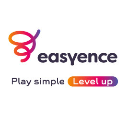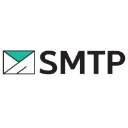
Easyence : Enhanced Analytics Software for E-commerce Optimisation
Easyence: in summary
Easyence is a robust analytics software tailored for e-commerce businesses. It enables retailers to gain actionable insights, optimise marketing strategies, and enhance customer experiences. Key features include advanced data analytics, personalised customer segmentation, and comprehensive marketing attribution.
What are the main features of Easyence?
Advanced Data Analytics
Easyence utilises cutting-edge analytics tools to help e-commerce businesses make informed decisions. Its advanced data analytics is designed for precision and ease of use:
- Real-time Data Processing: Instantly analyse transactions and customer behaviours.
- Customisable Dashboards: Tailor analytics views to your business needs.
- Predictive Analytics: Forecast trends and prepare for future market changes.
Personalised Customer Segmentation
Effectively segment your customer base for targeted marketing and improved customer engagement. Easyence’s personalised customer segmentation ensures you reach the right audience:
- Dynamic Segmentation: Real-time updates to reflect current customer behaviours.
- Behavioural Analysis: Gain insights based on customer interactions and purchasing habits.
- Custom Criteria: Segment customers based on demographics, purchase history, and more.
Comprehensive Marketing Attribution
Understand the full impact of your marketing efforts with Easyence’s comprehensive marketing attribution. This feature provides a holistic view of your campaigns' performance:
- Multi-Touch Attribution: Track customer interactions across various touchpoints.
- Channel Performance: Analyse and compare the effectiveness of different marketing channels.
- ROI Measurement: Measure the return on investment for your marketing spend.
Easyence: its rates
Standard
Rate
On demand
Clients alternatives to Easyence

Automate and streamline your email marketing with powerful tools for segmentation, A/B testing and analytics.
See more details See less details
Improve engagement rates by targeting the right audience with personalised content. Track performance with detailed reporting and optimise campaigns for maximum ROI.
Read our analysis about SMTPTo SMTP product page

Streamline your marketing efforts with automation software that tracks customer behaviour, generates leads and nurtures relationships.
See more details See less details
Automate your lead generation process and nurture customer relationships with personalised content. Track website visitors, create custom forms and landing pages, and analyse your campaigns for optimal results.
Read our analysis about Webmecanik AutomationBenefits of Webmecanik Automation
OpenSource
Proactive support
GDPR compliance
To Webmecanik Automation product page

Comprehensive tool for leveraging webinars, featuring interactive polling, Q&A, and analytics.
See more details See less details
Zoho Webinar empowers businesses and educators with a robust platform to conduct engaging online seminars. It offers interactive tools such as polling, a questions and answers segment, in-depth analytics to gauge participation and effectiveness, and seamless integration with marketing tools to amplify outreach and conversion. Customisable registration forms, detailed attendee analytics, and automated follow-ups enhance marketing efforts.
Read our analysis about Zoho WebinarTo Zoho Webinar product page
Appvizer Community Reviews (0) The reviews left on Appvizer are verified by our team to ensure the authenticity of their submitters.
Write a review No reviews, be the first to submit yours.